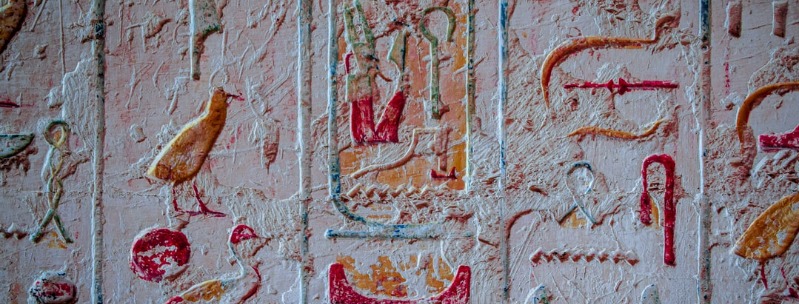Valley of the Kings – Explore the Monuments of Egypt
When Egypt is politically stable, it offers many wonderful things to see and do and enables visitors to walk in the footsteps of Africa‘s ancient and well-respected civilization.
The Valley of the Kings, near Luxor, is a fantastic place to see the final resting places of many of Egypt’s former greats. Pharaohs and noblemen were laid to rest in grand tombs, along with many things that they may need or want in the afterlife. The tombs were brightly colored, ornate, and decorated with fascinating hieroglyphics and pictures.
Luxor is one of the world’s greatest tourist destinations and has, quite rightly, been described as the world’s finest open air museum. When we talk about Luxor today we are really referring to three areas made up of Luxor itself, which lies on the East bank of the Nile; the town of Karnak, to the north of Luxor; and Thebes, the ancient capital of Egypt which lies on the West bank of the Nile.
Within the Luxor area we see more monuments, with greater care taken over their preservation, than you will find anywhere else on Earth. This entire area today is also highly geared towards the tourist, and so you will also find some wonderful hotels and other attractions, such as nightlife and shopping.
Against this background, let’s take a look at ten things that you might like to do, or see, in Luxor.
The Temple of Karnak
The Temple of Karnak was built over 2,000 years ago and, although this once great palace now lies largely in ruins, it still overshadows many of the wonders of our modern world. The palace covers some 200 acres and includes the Hypostyle Hall which, with its 134 columns, remains today the world’s largest religious space. The sheer scale of the Temple of Karnak takes your breath away, and it is hard to image just how awe inspiring it must have been when the Egyptian people looked upon it as a home to the gods.
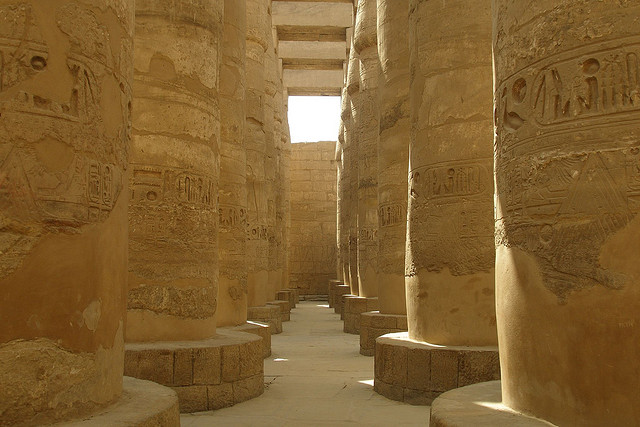
Luxor Temple
Luxor Temple was built by Amenhotep III in celebration of the annual Opet festival, during which statues of Amun, Khonsue and Mut were carried in procession to Luxor from Karnak. It is most impressive today however for the huge statues of R
amses II, that were just some of the additions to the temple during the later Pharaoh’s reign. The temple is lit at night and, to fully appreciate its magnificence, it is essential that you visit both during the day, and in the evening.
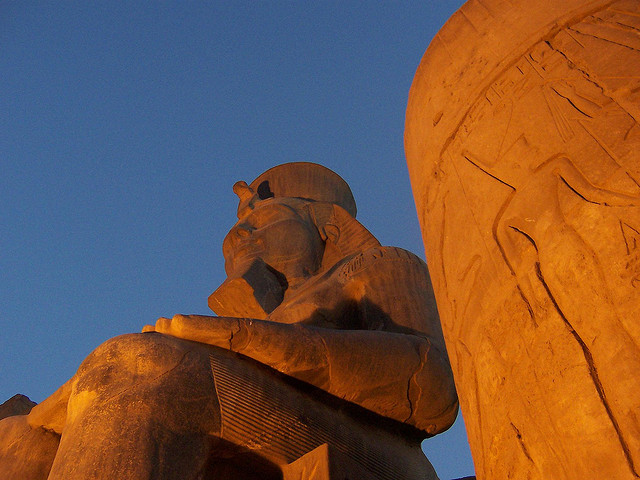
The Valley of the Kings
No holiday to Luxor would be complete without a visit to the Valley of the Kings on the West bank of the Nile. This ancient burial ground houses the tombs of 63 Pharaohs and dignitaries of ancient Egypt, including the boy king, Tutankhamun. Many of the tombs are open to the public, but avoid getting caught out in the heat of the day if you are visiting the tomb of Tutankhamun, because it is closed between 1pm and 2pm.

The Avenue of Sphinxes
There are several avenues of sphinxes in Luxor, but the most impressive of these is the avenue that connects Luxor Temple and Karnak Temple. This avenue is still being restored but, today the section close to Luxor temple is a truly wonderful site. However, if you want to see it, and other monuments in this area, in perspective, then you should take a trip around the area in a hot air balloon. That truly is something to remember.
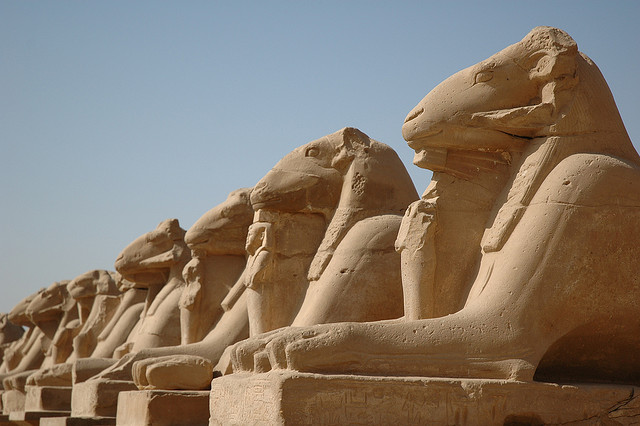
The Colossi of Memnon
When you first arrive on the West bank of the Nile, you will encounter two statues of Amenhotep III, each more than 60 feet high. These statues guarded the mortuary temple built for Amenhotep III, which is thought to have been the largest such temple ever constructed.
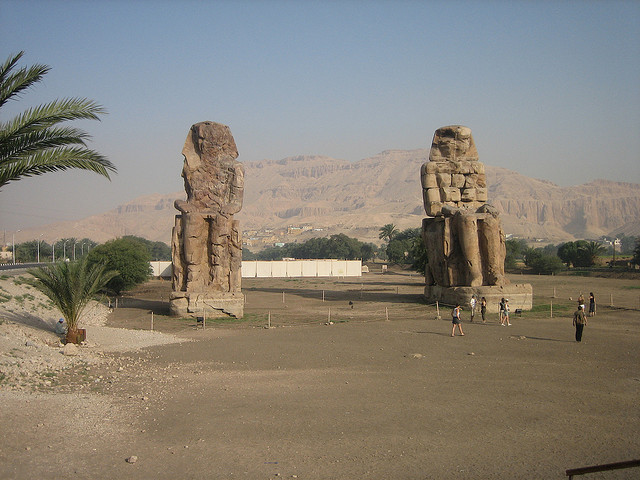
The Valley of the Artisans
Not far from the Valley of the Kings, and just south of the Valley of the Queens, lies Deir al-Medina, where the laborers and craftsmen who built the royal tombs lived. This Workman’s Village, as it is called locally, includes many of its own tombs that have survived in quite remarkable condition.

Luxor Museum
Situated between Luxor and Karnak, the Luxor museum houses many of the treasures discovered in this area, including the famed gilded head of Hathor, from the tomb of Tutankhamun.

Luxor Sound and Light Show
Son et Lumiere shows are not everybody’s cup of tea, but the Luxor Sound and Light Show is quite simply amazing, and the finale is something that many will find spiritually mesmerizing.
Try a little shopping at Caravanserai
Caravanserai is one of a number of fair trade shops in and around Luxor, and this one is located close to the Mortuary Temple of Ramses III. Prices are fixed, so there is no need to haggle, and you can pick up some wonderful souvenirs of your visit.
Eat and drink at Murphy’s Irish Pub
Life of course cannot all be site seeing, and a great place to let your hair down, and to get great food and drink in Luxor, is at Murphy’s Irish Pub.
Well, there we have it, ten places to visit in Luxor. Of course there are many more sites to see, but if you start with these you cannot go far wrong.
Valley of the Kings FAQ
There are some common questions asked about a trip to the Valley of the Kings:
How Many Tombs Can I Visit?
There are hundreds of tombs spread between two main valleys. An entrance ticket allows you to visit three separate tombs, although only certain tombs are open for members of the public on particular days. This is so as to preserve and protect important sites. A guide will tell visitors about the tomb’s owner and all points of interest relating to the area on a whole and each particular tomb that is visited. You can pay extra to visit more tombs, and the famous tomb of Tutankhamun is not included in the regular ticket, so you would need to pay more to see that tomb in any case, if you wanted to go inside and see where the child King was laid to rest. Don’t get spooked by the tales of curses though!
What About the Females?
Important Egyptian females were buried in the nearby Valley of the Queens. A similar set up is in operation, where you can go inside certain tombs on certain days.
Does Anyone Live in the Area?
There are a few Nubian settlements on the West Bank of the River Nile. Local residents are easy to spot; they are almost always wearing traditional Nubian clothes. They can be seen sitting in small clusters smoking pipes and also offering cool drinks and souvenirs to tourists.
How Can I Visit the Valley of the Kings?
Whilst an independent visit is possible, with your own or arranged transport, it is just as easy to go as part of an organized day trip from Luxur. Many Nile cruises include a visit as part of their itinerary.
What is Inside the Tombs?
From the outside, most of the tombs seem to be no more than small, unimpressive doorways into the side of the rocks and mountains. It is dusty. Entering through the doors though, you will see wonderful carvings and intricate wall pictures. It is difficult to keep moving and not stop to admire these for a long time! The atmosphere is quite stuffy inside, and the air is dry. Visitors should be respectfully quiet. To stop a build up, people are told to keep moving forward, rather than blocking the narrow corridors. Steep stairs lead down to the main sarcophagus room. The sarcophagi are huge stone coffins, with almost fearsome features. You will certainly feel like you have stepped back in time to ancient Egypt!
The Valley of the Kings, along with the Valley of the Queens, is an important legacy from the times of the Pharaohs and makes for a terrific trip today.
